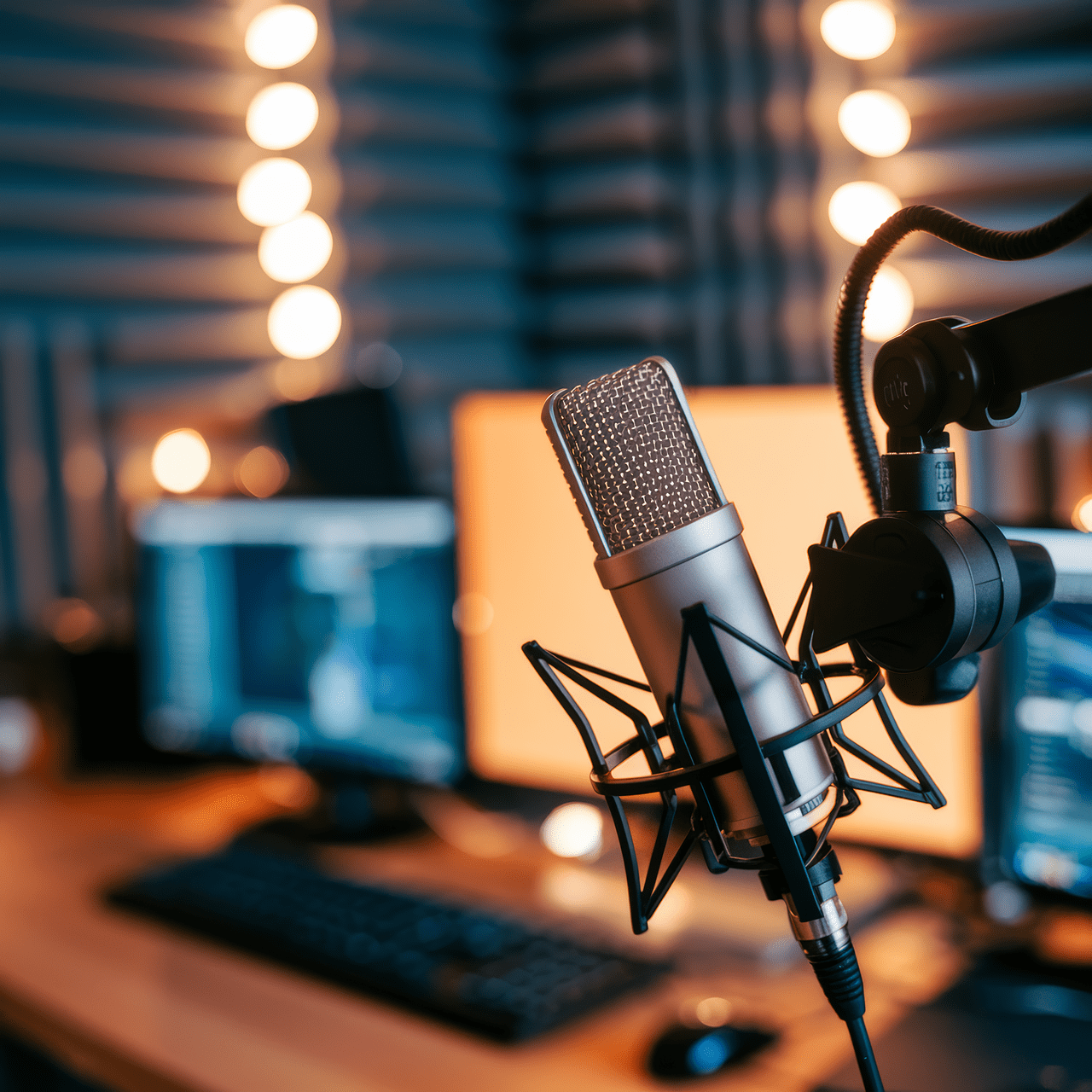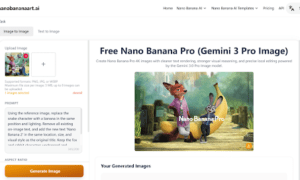Videos, tutorials, and ads are the heart of marketing strategies. But creating professional voiceovers is a slow, expensive, and complicated process.
What if you could flip the story? You create a video ad, a tutorial, or a product guide with a human-like voice within minutes.
AI-voiceover generators make it possible. This technology is transforming how brands communicate by speeding up content production to reach audiences in multiple languages without hiring voice actors. Beyond marketing, AI is reshaping several other industries too — for example, HR teams now use AI recruiting tools to automate candidate sourcing, screening, and engagement. AI voice is changing the game for marketers and niche-specific businesses.
In this blog, we’ll discuss the rise of AI voice-over technology, its benefits, and its future.
The Rise of AI Voice-Over Technology
AI voice generation is evolving rapidly. The earliest tools sounded robotic. But the tools these days capture intonation, emotion, reading speed variations, and subtle emphasis. Many voice-over platforms and AI voice agent platforms are enabling brands to speak in a consistent voice across ads, tutorials, IVRs, and chatbots.
Analysts valued the AI voice generator market at about USD 3,564.0 million in 2023, and they project it will grow at a CAGR of 29.6% through 2030.
The main reasons for the adoption of AI voice are:
- Demand for Scalable Content: Businesses these days need large volumes of audio content. They want to publish videos, tutorials, ads, and podcasts daily on their channels. AI voice helps in producing a huge amount of content without hiring multiple voice actors.
- Cost and Time Efficiency: Traditional voice-over recordings require a team of professionals, which leads to increased costs. And this process is time-consuming because there are retakes and changes. AI voice reduces production time from weeks to days and helps in cost-cutting.
- Multilingual Reach: Businesses want to connect with global audiences. AI can help them by creating natural-sounding voice-overs in multiple languages. It can generate audio content of multiple forms as well to post across various social media platforms.
- Consistency and Brand Voice: Maintaining a uniform tone across campaigns builds brand recognition. AI voice can maintain the same voice and tone, ensuring your messaging is consistent throughout all platforms.
Benefits for Marketers and Brands
Let us briefly discuss what makes AI voice-over so powerful and how you can use it to drive business growth.
Massive Cost and Time Savings
AI voiceovers save time by removing studio scheduling, retakes, coordination, and language dubbing overhead. It also cuts the production costs by up to 80%. A marketing team can use AI voice to replace a two-week voiceover process, creating multiple scripts instantly.
When you have dozens of videos or tutorials to update, this saves a lot of time and effort.
Scalability & Global Reach
Consider you run a CPAP store. You want video tutorials, user guides, or educational content for various language markets, such as English, Spanish, Portuguese, and Mandarin.
Using an AI voice, you can produce content in the native language of your target audience without hiring separate voice actors per language. AI tools synchronize all the video content tonally and ensure it maintains a consistent brand voice.
Content automation startups use this exact approach to empower small and mid-sized businesses to scale voice-led content creation across multiple markets. All this while easily maintaining tone consistency and brand authenticity.
Brands can also build a “brand voice persona”. It’s a signature tone or style that stays consistent across touchpoints (ads, IVR, chat, video). This consistency helps with brand identity and recall.
Personalization and Dynamic Ads
AI voice lets you personalize messages in real time. For example, an audio ad could say, “Hello Jack, here’s a 10% discount just for you,” or “In New Jersey, this model is the most popular.” Since the voice isn’t a fixed recording, you can make these changes instantly using data.
In voice assistant environments like chatbots and voicebots, 89% of customers say they prefer brands that offer voice AI support. This ensures that they can comfortably ask their questions while multitasking. Use that wisely. Personalization must feel helpful, not intrusive.
Experimentation & A/B Testing
You can test different tones, pacing, CTA styles, or introductions without waiting weeks. You can experiment with warm tones, authoritative tones, or content changes within a few minutes. AI voice makes that possible. That agility lets you optimize audio messaging the same way you optimize visual or copy ad versions.
Accessibility & Inclusion
Voice narrations help audiences who prefer auditory content, have visual impairments, or want multitasking consumption. This broadens your reach and makes content more inclusive.
AI voices can also be switched in terms of accent, gender, or pace to suit regional preferences. But beware, because a study on synthetic voice services found accent bias, where some regional accents generate lower fidelity voice outputs, risking exclusion.
Data-Driven Insights
AI voice systems log every interaction with users. The interactions, like user skips, pauses, repeats, and engagement time, are monitored. This feedback loop helps marketers see which voice styles or scripts perform best. Over time, you refine your content and the voiceover content delivery.
Future of AI Voice in Marketing
What lies ahead? Let us walk through the promising directions and how you can prepare.
Voice Agents as Full Marketing Channels
Instead of voice being just a layer on video or ads, we’ll see full-fledged voice agents. Think about the conversational voices that guide, upsell, or cross-sell seamlessly. These agents will have memory, personality, and context awareness. Already, companies are embedding voice agents into products, apps, and in-store systems.
For instance, consider a CPAP machine that, when connected to your app, uses the brand’s voice persona to walk a user through cleaning steps or new product features. It’s a subtle but powerful brand touchpoint.
Real-Time Voice Personalization
Soon, systems will adapt tone in real time. If a listener seems confused, the voice slows down and clarifies. If they seem engaged, it shifts into a more energetic mode.
Voice agents will even mirror the emotional tone of the listeners. Research into vocal tone and trust shows that vocal tone significantly influences how trustworthy a listener feels the voice assistant is.
Voice + AI Content Ecosystems
We won’t just generate voice; AI systems will forecast what voice style will perform best for a campaign, auto-generate scripts, test voices, and roll out versions. The feedback loop will narrow. Voice will be deeply integrated into the generative AI stack.
Additionally, audio-first content like voice blogs or podcasts that are dynamically voiced will grow. Imagine your blog turning itself into narrated episodes, adjusted daily.
Ethical & Legal Frameworks Will Evolve
We’ll see more agreements like the Hollywood union’s deal that allows actors to license their AI voice replicas. Regulators are introducing rules and standards, and brands will need to clearly disclose to audiences when AI generates a voice.
At the same time, people can misuse an AI voice. For example, fraudsters once copied a CEO’s voice to trick their own company into making fake transactions. Because of this, trust, verification, and proper permission are more important because this may lead to huge disruptions.
Embrace the Future of AI Voice
AI voice-over technology is changing the way brands communicate with the target audience. It allows you to create content faster, reach audiences in multiple languages, and maintain a consistent brand voice across all channels.
To make the most of it:
- Start Small: Start using short videos, tutorials, or micro-ads before using them in major campaigns..
- Test and Experiment: Try different tones, pacing, and voice styles to see what resonates with your audience.
- Plan for Consistency: Treat your AI voice as a brand ambassador; keep the tone and style uniform across all content.
- Follow the Rules: Always obtain permission for any voice content you use and clearly inform your audience when AI generates a voice.
AI voice is already here, giving marketers speed, flexibility, and creative freedom like never before.
For more news, insights, and resources on AI, marketing, and technology, visit TechBullion.



































